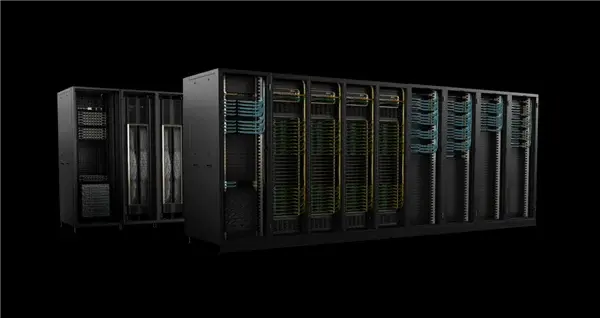NVIDIA revealed a brand new automotive chip called Thor during its CES 2025 keynote presentation. This chip is built on the Blackwell platform and boasts 20 times more processing power compared to the current generation of automotive chips. It is designed to aid in virtual simulations for autonomous vehicles.
New Approach to Autonomous Driving
Rather than relying on logging millions of miles like Tesla does with its Full Self-Driving (FSD) feature, NVIDIA is investing in a synthetic world simulator named Cosmos. This innovative tool will complement the three chips that are essential for AI in autonomous vehicles.
The Cosmos platform comprises cutting-edge generative world foundation models, tokenizers, guardrails, and a speedy video processing pipeline. These components aim to enhance the creation of physical AI systems, including autonomous vehicles and robots, according to NVIDIA.
Upgraded AI Processing Power
In addition to the new simulator, NVIDIA has upgraded its AI processing chips with the Thor automotive chip, which is the successor to the Orin line. The Thor chip features the Blackwell architecture, similar to the recently launched GeForce RTX 5070 gaming card, which NVIDIA claims can match the performance of an RTX 4090 at a price of $549.
Thor provides 1,000 TFLOPS of powerful AI computing and offers roughly 20 times the AI capability of its predecessor. Its efficiency is crucial as it helps reduce the overall costs of System on Chip (SoC) in vehicles that integrate both autonomous driving and infotainment systems.
Flexible Architecture for Car Manufacturers
Automakers and developers of autonomous vehicle solutions can allocate the 1,000 TFLOPS of computing power between self-driving tasks and infotainment systems, making the architecture highly adaptable. According to ARM, “When used in level 3 or higher autonomous driving scenarios, a single Nvidia DRIVE AGX Thor can replicate the functionality of multiple advanced devices currently found in vehicles, leading to considerable advantages in performance for car manufacturers.”
NVIDIA also highlighted multiple safety and security certifications for its new Thor-based Drive AGX platform, including recognition from the ANSI National Accreditation Board and TÜV Rheinland.
Partnerships and Innovative Simulation Features
NVIDIA has already partnered with various automakers and autonomous driving solution providers such as Mercedes and Nuro. They are utilizing NVIDIA’s self-driving chips and Cosmos simulation software, which includes features like OmniMap that combines mapping and satellite imagery to create 3D environments that are drivable. The Neural Reconstruction Engine generates high-fidelity 4D simulation environments from AV sensor data. Additionally, Edify 3DS can search for existing scenes or create 3D objects based on text or image prompts, transforming scenes in NVIDIA Omniverse that are grounded in 4D. Finally, Cosmos is capable of generating countless variations of driving scenarios using simple text prompts.
However, it is yet to be determined if the Cosmos simulator will enable traditional automakers and electric vehicle startups to bridge the gap with Tesla’s FSD solution, which relies on extensive real-world driving data to enhance its AI algorithms.
Source: Link



